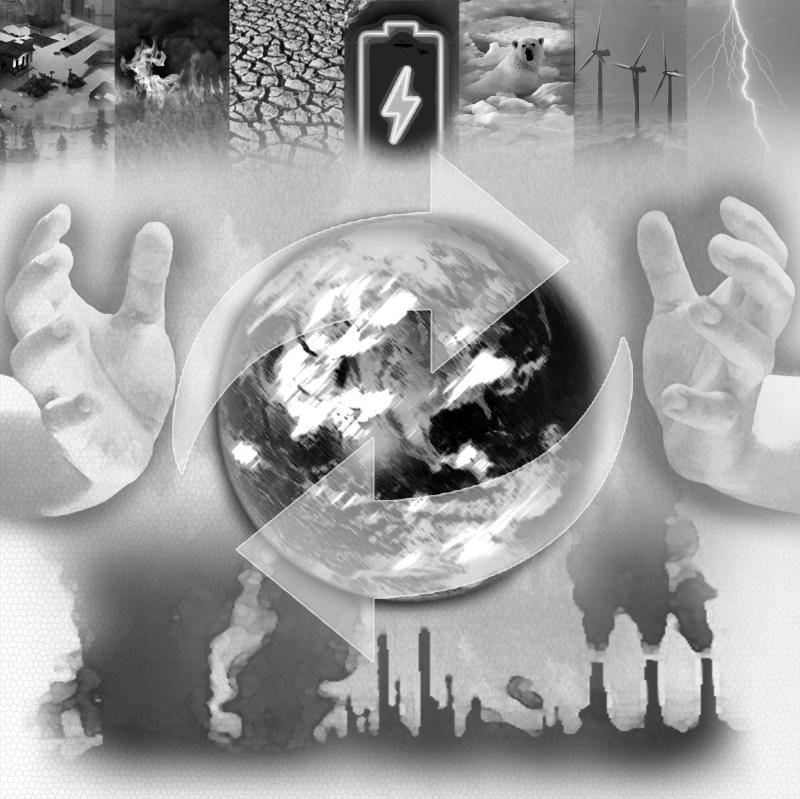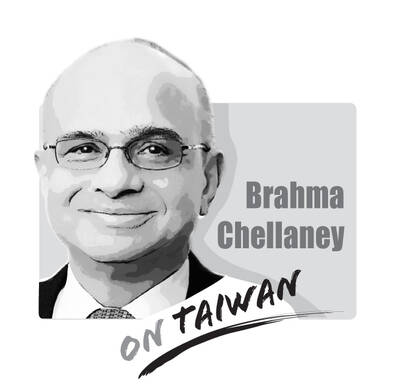The current escalation of multiple, overlapping crises — climate-related disasters, a pandemic, war in Europe and stagflation — is intensifying anxiety and uncertainty the world over. Conventional solutions are no longer working. Politicians have few persuasive answers. Existing institutions are overwhelmed. Global civilization is in the throes of a great transformation of unprecedented scale.
Each of the five foundational sectors that together define a civilization — energy, transport, food, information and materials — is undergoing rapid technological disruption. These upheavals signal the twilight of today’s dominant extractive industries, which are entering an economic death spiral, auguring higher unemployment, deeper inequality and civil unrest.
However, this “global phase shift” is also laying the foundations for a new civilizational life cycle. The most consequential technological disruptions aimed at mitigating climate change affect three foundational sectors — energy, transport and food — that together account for 90 percent of global greenhouse-gas emissions.

Illustration: Kevin Sheu
Fossil-fuel energy is being disrupted by the “super power” potential of solar, wind and batteries (SWB). Privately owned vehicles powered by gas-guzzling internal-combustion engines will be overtaken by electric vehicles (EVs) and eventually by autonomous EVs (A-EVs). Livestock rearing and commercial fishing are being upended by precision fermentation and cellular agriculture, which allow us to brew and program all kinds of proteins without killing animals.
All disruptive technologies follow the same learning-by-doing feedback loop. As costs decline exponentially, their adoption accelerates until they dominate the market. When these technologies become 10 times cheaper than the incumbent technology, they swiftly displace it. The disruption of horses by cars, landlines by smartphones and photographic film by digital cameras all happened within 10 to 15 years.
Disruptions are not one-for-one substitutions, but instead lead to completely new systems with distinctive properties. For the first time in our history, emerging technologies show a clear pathway to ending the age of scarcity.
Oil, gas and coal are becoming more inefficient and expensive. The value of the energy they produce relative to the energy they use has declined by more than half in the past two decades. However, the opposite is true of SWB, for which energy return on investment is increasing exponentially.
As I explained in a recent Earth4All paper, the cheapest SWB combination involves supersizing solar and wind generating capacity to three to five times the level of existing demand.
This “super power” capacity — producing more energy than incumbent fossil-fuel systems at zero marginal cost for most of the year — would dramatically reduce overall system costs by removing the need for weeks’ worth of seasonal battery storage.
Swiss government scientists have shown that building such a system globally could generate up to 10 times the amount of energy we use today. That will enable the electrification of a vast array of industries, from wastewater treatment and recycling to mining and manufacturing. And this system will not need constant material inputs like the current fossil-fuel system; once built, it will last 50 to 80 years.
Similar counterintuitive cascading effects will benefit the transport sector. EV and A-EV cost curves show that ride-hailing via transport-as-a-service (TaaS) will become up to 10 times cheaper than owning and managing your own car by the 2030s.
As a result, only a fraction of the number of vehicles we use now will be in service. And, because SWB and TaaS entail a tiny proportion of the battery storage demand anticipated by most conventional analysts, consumption of critical minerals needed to produce the batteries will be much lower than feared.
These disruptions will also render obsolete the entire infrastructure of incumbent fossil-fuel-based energy, transport and food systems. That includes oil rigs, gas terminals, pipelines and coal-fired power plants, as well as global logistics and shipping networks for fossil fuels, livestock and livestock products.
Dismantling this infrastructure will create unprecedented scope for metals recycling. Iron, aluminum, steel, copper, nickel and cobalt are used extensively in the oil industry, but will also help drive the energy, transport and food transformation.
Meanwhile, the disruption of dairy industries will free up 2.7 billion hectares of land previously dedicated to animal husbandry for rewilding, regenerative agriculture and active reforestation. This will permit large-scale natural strategies to withdraw and capture atmospheric carbon.
Over the next two decades, the transformation of the global production system will create unique possibilities — what my RethinkX colleagues James Arbib and Tony Seba call an “Age of Freedom.” Moreover, we do not need to wait for exotic and expensive breakthrough technologies to solve our biggest global challenges. We have all the tools we need to usher in a new era of superabundance that provides advanced power, mobility, food, education and infrastructure to everyone at a 10th of the cost of incumbent systems and without breaching planetary boundaries.
However, getting to this “Age of Freedom” will not be easy. Today’s disruptions are fast, but not fast enough for the world to escape the climate danger zone. If we delay them by clinging to dying incumbent industries, the social, economic and geopolitical fallout could stall or even obstruct the transformation.
Because disruptive technologies scale for economic reasons, governments can accelerate this transformation by leveraging markets. That requires ending trillion-dollar subsidies and new investments in conventional energy; creating free and fair electricity markets that uphold individuals’ right to own and trade power; and establishing open-source intellectual-property systems for global design and local implementation. In the case of residential heating, governments should provide incentives and subsidies for electrification.
Most of all, we must shift our mindsets and embrace the necessity of a radical shift from centralized to decentralized provision of energy, transport and food. That means switching from top-down to bottom-up, and from hierarchies to networks and nodes.
The old system is dying as a new one is being born, putting us in the eye of the storm. However, with the right choices, we can rapidly build a more just and advanced civilization that provides unparalleled levels of universal and sustainable prosperity. There is no time to lose — and everything to gain.
Nafeez Ahmed, director of global research communications at RethinkX, is a commissioner on the Club of Rome’s Transformational Economics Commission.
Copyright: Project Syndicate
Recently, China launched another diplomatic offensive against Taiwan, improperly linking its “one China principle” with UN General Assembly Resolution 2758 to constrain Taiwan’s diplomatic space. After Taiwan’s presidential election on Jan. 13, China persuaded Nauru to sever diplomatic ties with Taiwan. Nauru cited Resolution 2758 in its declaration of the diplomatic break. Subsequently, during the WHO Executive Board meeting that month, Beijing rallied countries including Venezuela, Zimbabwe, Belarus, Egypt, Nicaragua, Sri Lanka, Laos, Russia, Syria and Pakistan to reiterate the “one China principle” in their statements, and assert that “Resolution 2758 has settled the status of Taiwan” to hinder Taiwan’s

Can US dialogue and cooperation with the communist dictatorship in Beijing help avert a Taiwan Strait crisis? Or is US President Joe Biden playing into Chinese President Xi Jinping’s (習近平) hands? With America preoccupied with the wars in Europe and the Middle East, Biden is seeking better relations with Xi’s regime. The goal is to responsibly manage US-China competition and prevent unintended conflict, thereby hoping to create greater space for the two countries to work together in areas where their interests align. The existing wars have already stretched US military resources thin, and the last thing Biden wants is yet another war.
As Maldivian President Mohamed Muizzu’s party won by a landslide in Sunday’s parliamentary election, it is a good time to take another look at recent developments in the Maldivian foreign policy. While Muizzu has been promoting his “Maldives First” policy, the agenda seems to have lost sight of a number of factors. Contemporary Maldivian policy serves as a stark illustration of how a blend of missteps in public posturing, populist agendas and inattentive leadership can lead to diplomatic setbacks and damage a country’s long-term foreign policy priorities. Over the past few months, Maldivian foreign policy has entangled itself in playing
A group of Chinese Nationalist Party (KMT) lawmakers led by the party’s legislative caucus whip Fu Kun-chi (?) are to visit Beijing for four days this week, but some have questioned the timing and purpose of the visit, which demonstrates the KMT caucus’ increasing arrogance. Fu on Wednesday last week confirmed that following an invitation by Beijing, he would lead a group of lawmakers to China from Thursday to Sunday to discuss tourism and agricultural exports, but he refused to say whether they would meet with Chinese officials. That the visit is taking place during the legislative session and in the aftermath